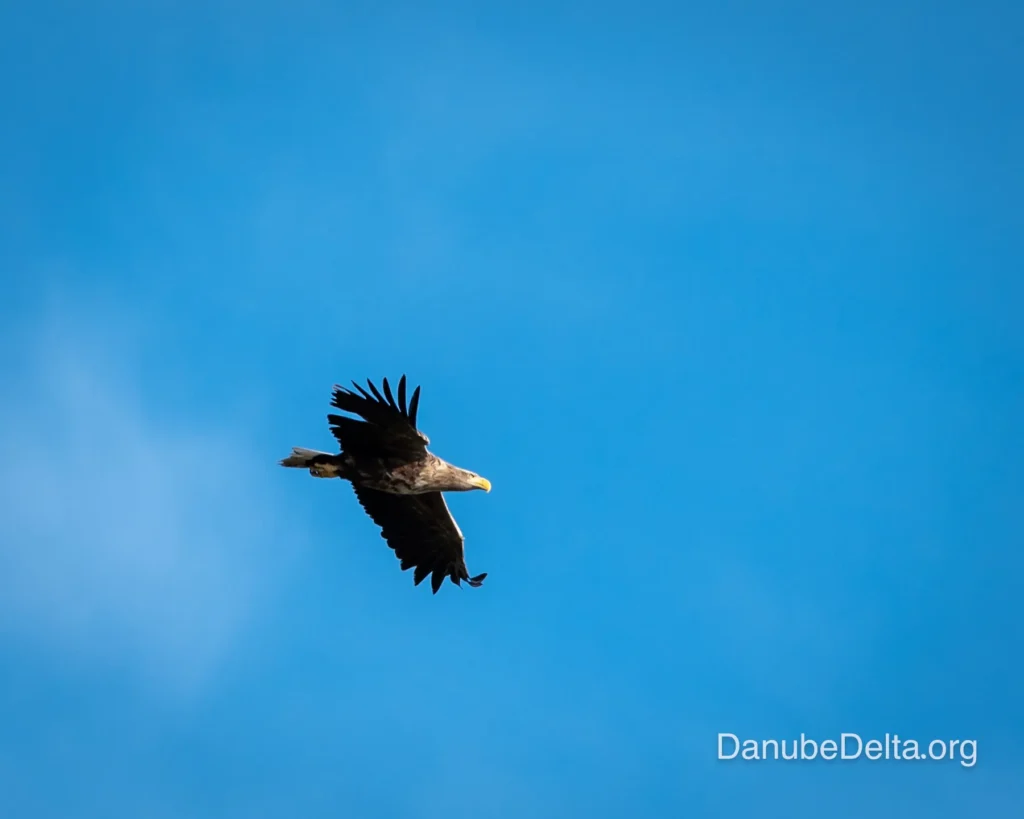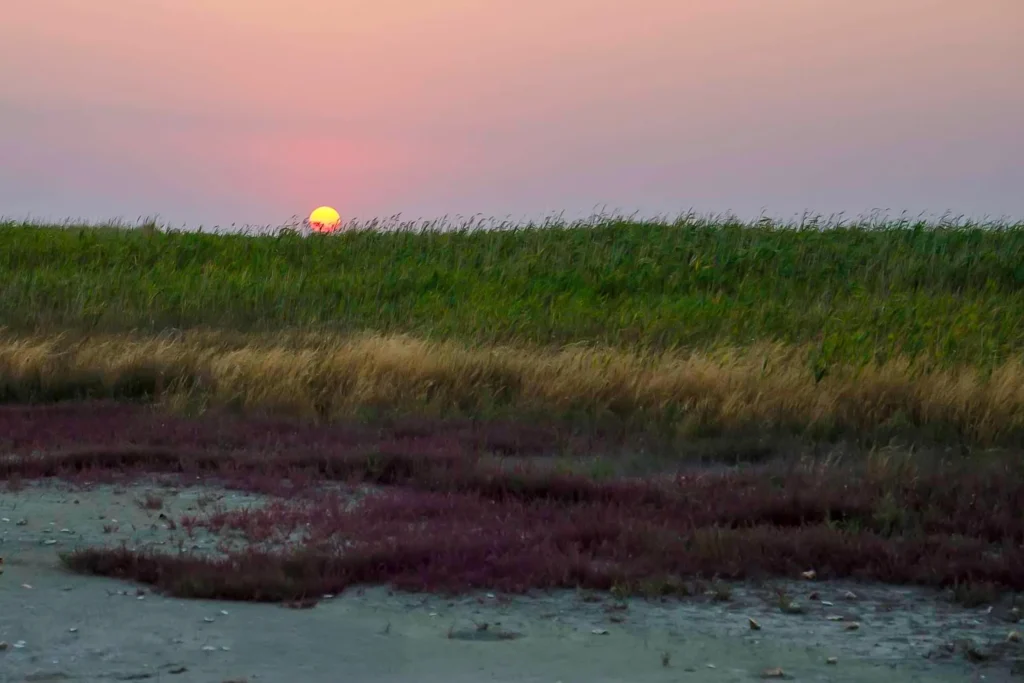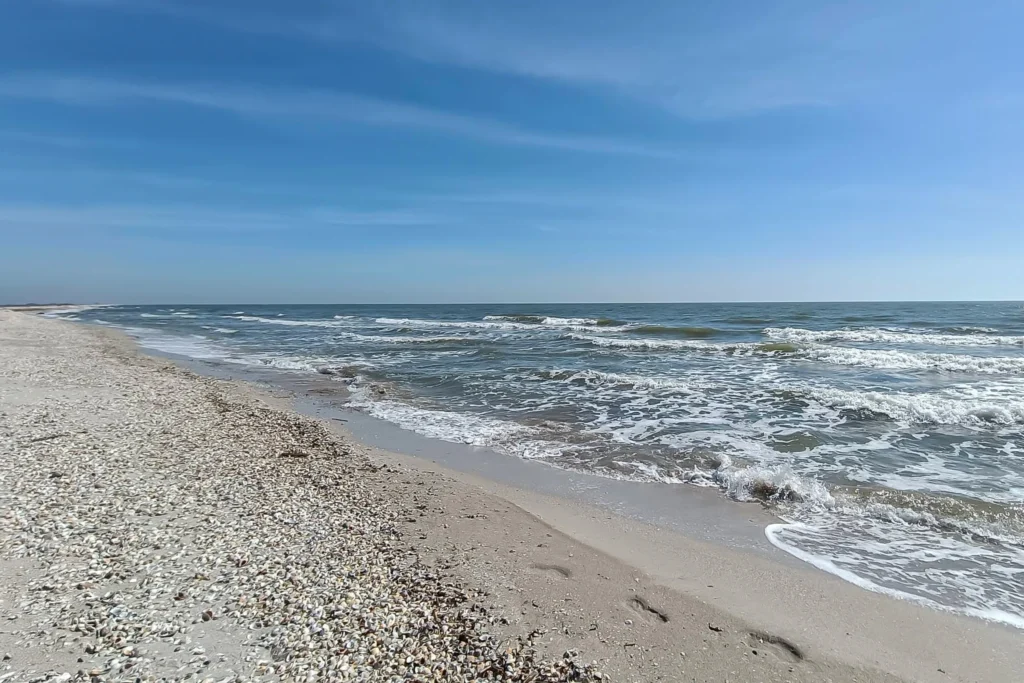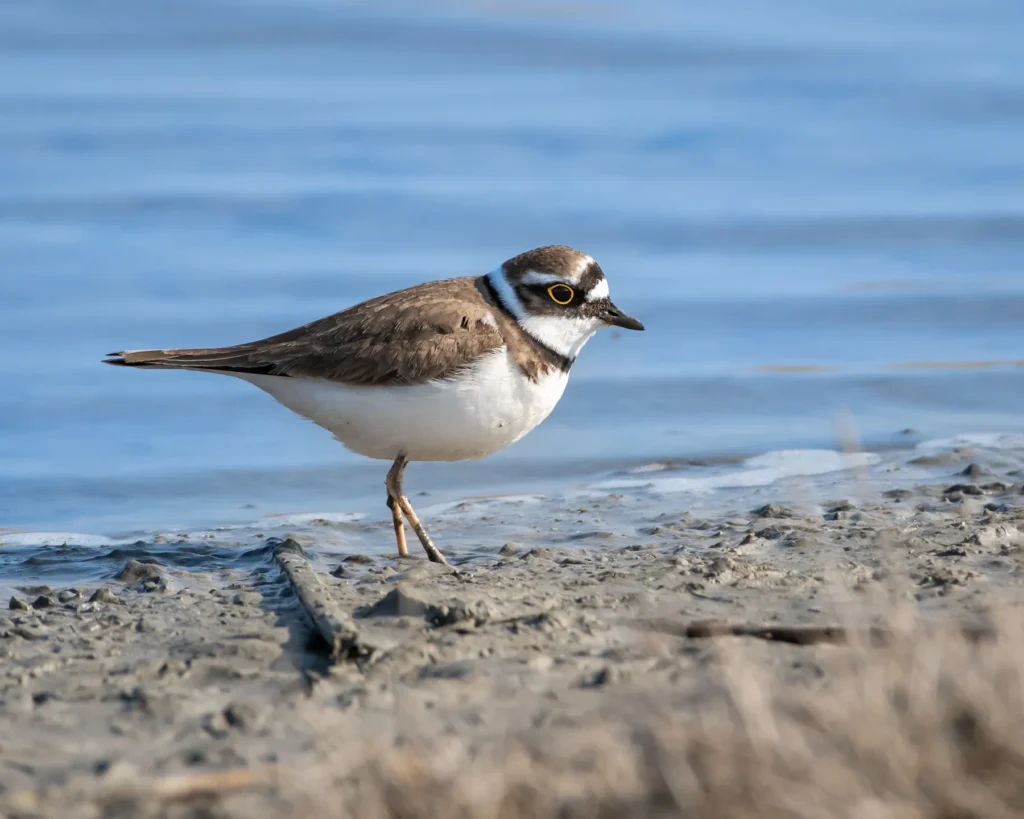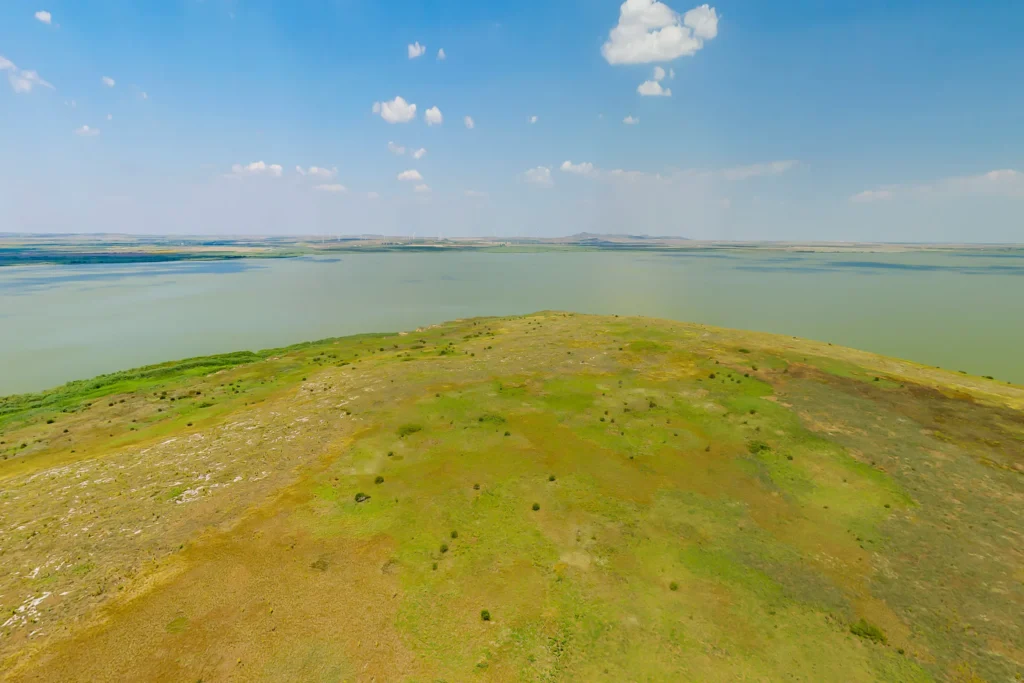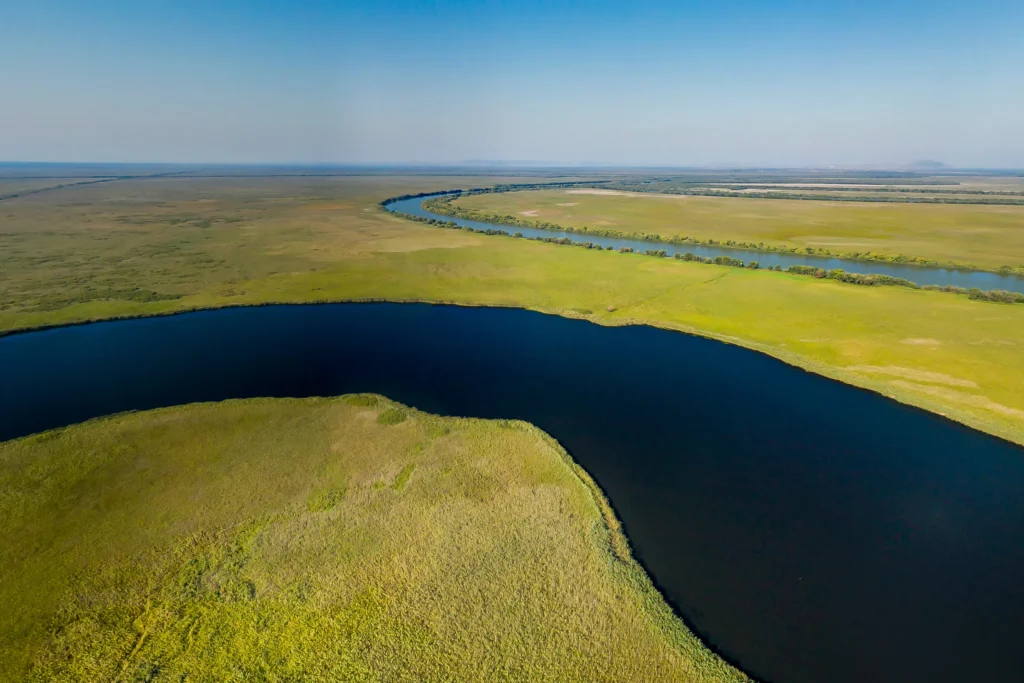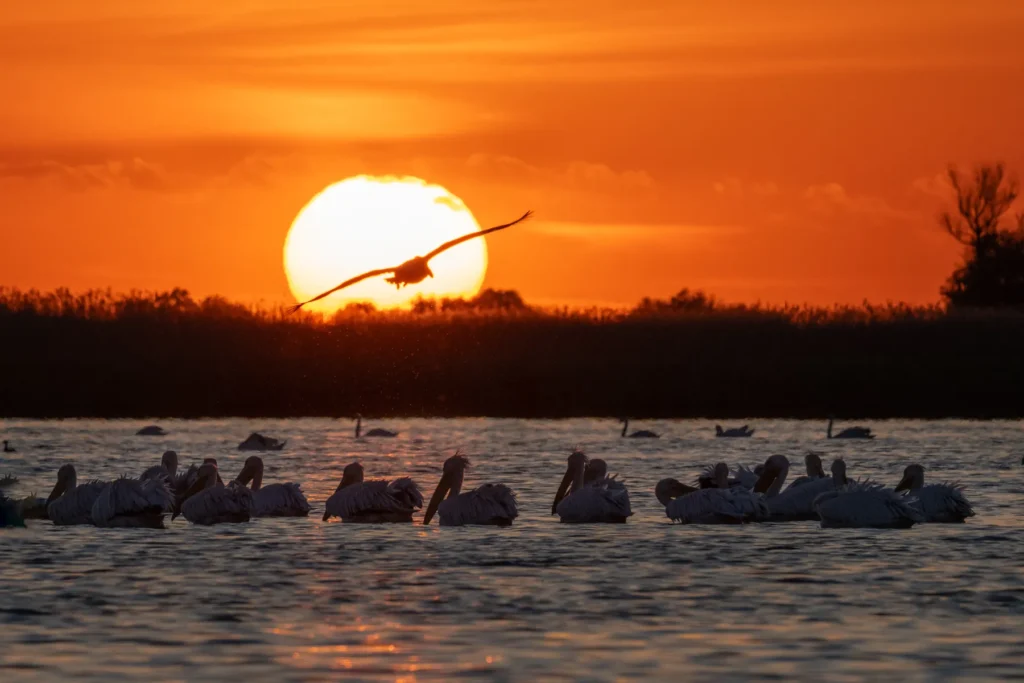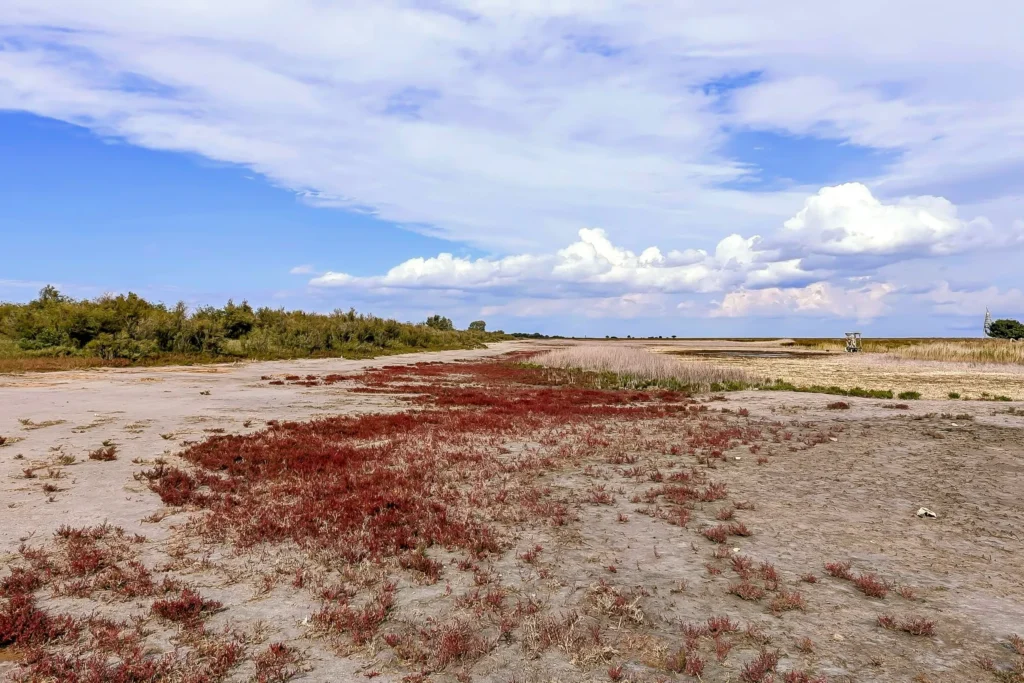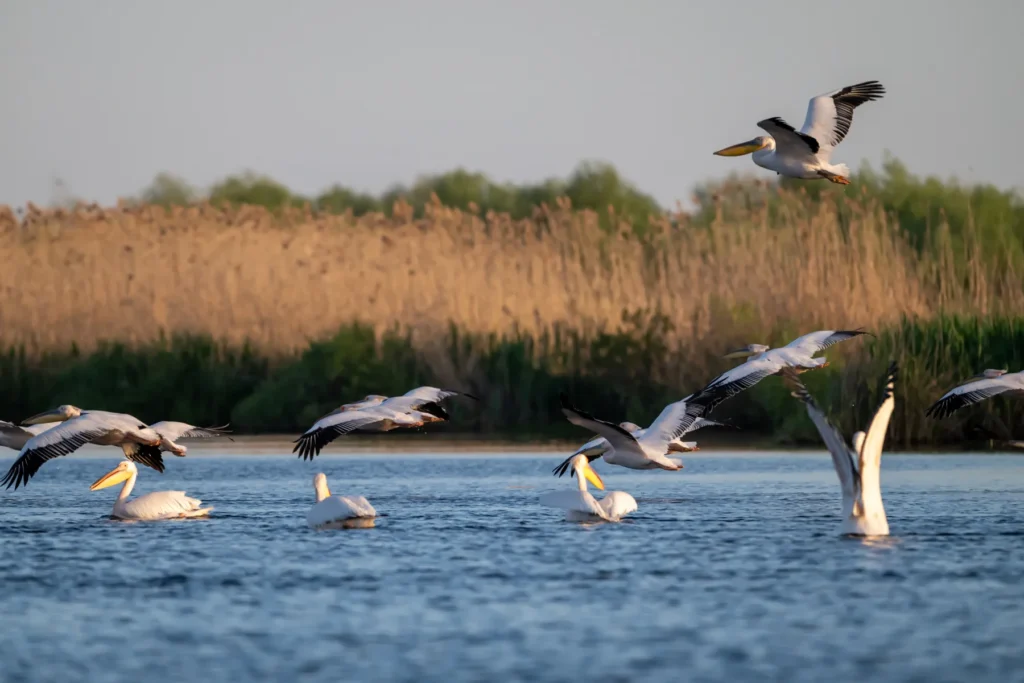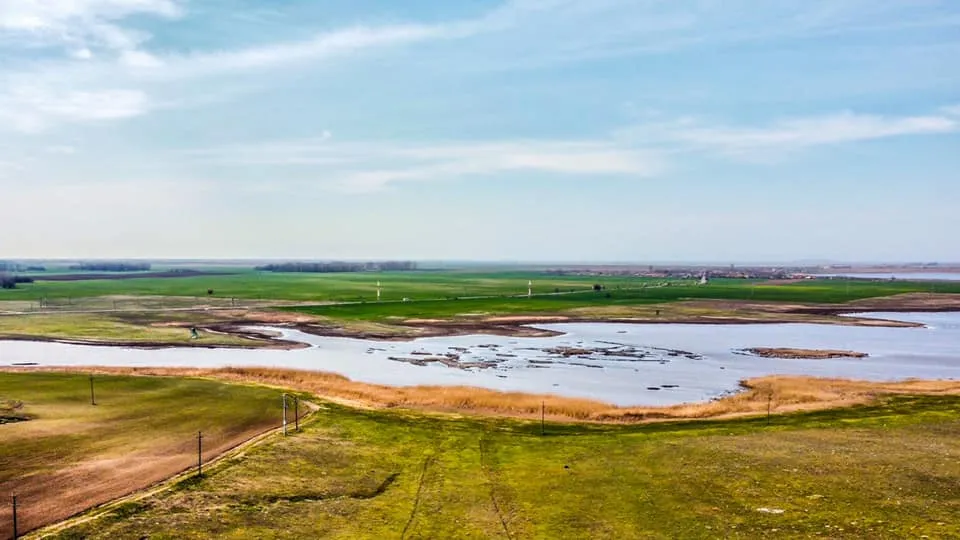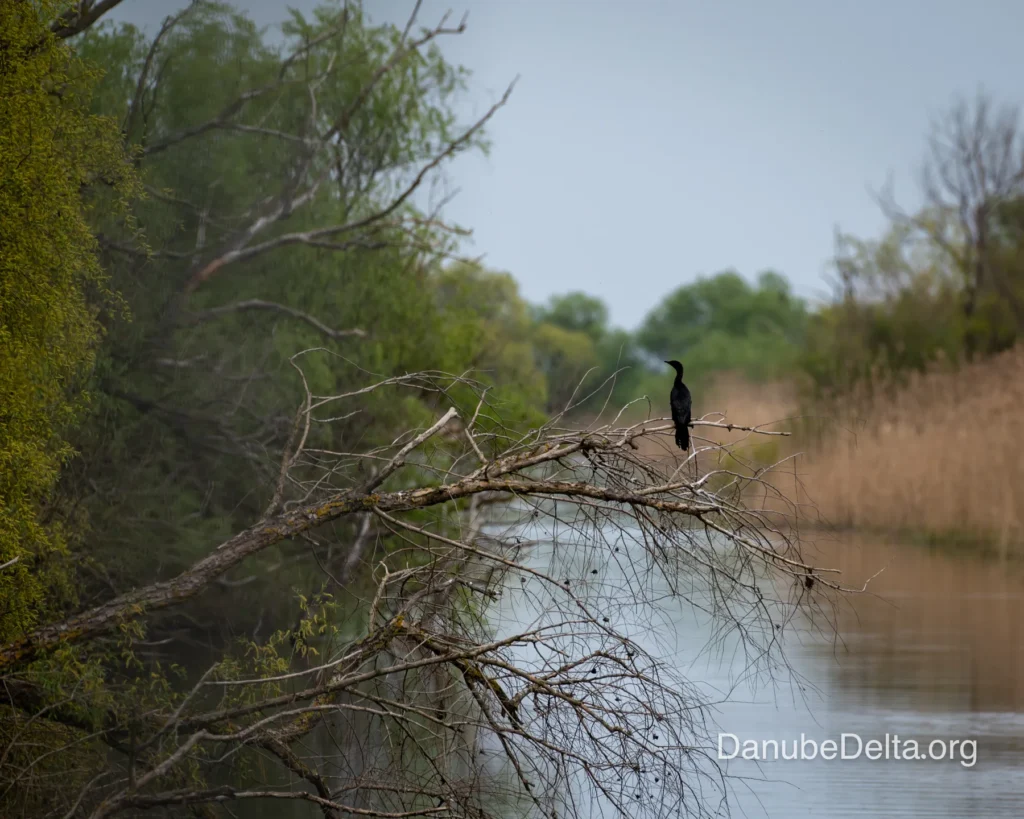Caraorman Forest, a strictly protected area in the Danube Delta
Caraorman Forest - Danube Delta
Oasis of Mystery and Contrast in the Heart of the Danube Delta
Caraorman Forest, whose name translates from Turkish as "Black Forest" (kara orman), is one of the most remarkable and enigmatic landscapes of the Danube Delta Biosphere Reserve (DDBBR), a unique ecosystem that develops on a sandy marine sandstone, strategically located between the Sulina and Sfântu Gheorghe inlets. The uniqueness of the area stems from its extraordinary visual and ecological contrast, where the most developed sand dunes in the Delta intertwine with a centuries-old forest of surprising density and biodiversity. This expert report analyses in depth the legal status of the area, its geographical and ecological characteristics, the main threats to it and the concrete conservation measures implemented to ensure the protection of this exceptional natural heritage.
Official Statute and Legal Framework: the Protection Foundation
The Caraorman Forest benefits from a strong protection regime based on national legislation and international recognition, which underlines its inestimable ecological value.
Strict Nature Reserve status
The protected area corresponds to the International Union for the Conservation of Nature (IUCN) category I-a and is classified as a strict mixed nature reserve. This status imposes a fully protected regime, where all economic activity is prohibited and access is allowed exclusively for scientific research and monitoring purposes. This rigid legal framework is essential to minimise anthropogenic impacts and allow natural processes to unfold unhindered.
Establishment and Administration Legislation
The current legal status of the Caraorman Forest was consolidated by Law No 5 of 6 March 2000, which approved the National Spatial Plan - Section III - protected areas. Although it has been under protection since 1938 and integrated into the RBDD since 1990, this law gave it the status of a protected area of national interest. The Administration of the Danube Delta Biosphere Reserve (ARBDD) is fully responsible for the management and coordination of conservation activities. This public institution, under the Ministry of the Environment, is responsible for implementing conservation policies and monitoring the state of natural heritage.
A major challenge for the ARBDD lies in reconciling the objective of protection with that of tourism promotion. On the one hand, they want Caraorman Forest to become as popular a destination as Letea Forest. On the other hand, the fragility of the ecosystem imposes severe restrictions on visitors. The current approach suggests a balancing strategy: creating responsible tourism infrastructure based on strict access control and education. EU-funded conservation projects are intended to create the necessary foundation for sustainable tourism, transforming the potential risk of uncontrolled tourism into a mechanism to raise awareness and capitalise on natural heritage.
Table 1: General Characteristics and Official Status
| Feature | Details |
| Name | Caraorman Forest |
| Meaning of the name | "Black Forest" (from Turkish kara orman) |
| Localisation | The Caraorman Grind, between the Sulina and Sfântu Gheorghe inlets |
| County | Tulcea |
| Common | Crișan |
| Surface | 2 250 ha |
| Legal status | Strict Nature Reserve (IUCN Category Ia) |
| Legislative act | Law No 5 of 6 March 2000 |
| Declaration year | 2000 (declared legal), 1938 (placed under protection), 1990 (integrated into RBDD) |
Geographical and Ecological Features: A Landscape in Contrast
The Caraorman Forest's location on a sandy sandstone gives it a unique geographical and ecological identity, differentiating it from the other aquatic ecosystems of the Delta.
Geomorphology of the Caraorman Grind
The forest extends over the administrative territory of Crișan commune, covering an area of 2,250 hectares. The Caraorman Grind, on which the forest develops, is a formation of marine origin, formed as part of a sand barrier more than 2,000 years ago. It has a length of 18 km and a maximum width of 8 km, and on its surface are the highest and most representative denuded dunes in the Delta, reaching heights of up to 9 metres.
A particular ecological feature of the Caraorman Forest is the paradox between the sandy substrate, typical of desert or steppe areas, and the lush forest ecosystem it supports. Thanks to its specific microclimate, the forest has an almost subtropical appearance, a characteristic mainly conferred by the presence of Mediterranean lianas Periploca graeca. This species, which grows to 20-25 metres in length, is found here at the northern limit of its range in Europe , making it an essential object of study for biologists. This atypical landscape, sometimes described as a "mini-jungle" , demonstrates a remarkable adaptability of the flora to extreme environmental conditions and makes Caraorman a fundamental research destination. Although the forest is a terrestrial area, its hydrological regime is influenced by the fluctuating waters of the Delta, with possible floods in spring and extremely hot summers, typical of the temperate-continental climate.
Exceptional Biodiversity: Flora and Fauna of the Black Forest
Caraorman Forest is a true haven for biodiversity, harbouring plant and animal species unique in the context of the Danube Delta.
Emblematic Flora
The forest vegetation is dominated by a stand of oaks (Quercus robur and Quercus pedunculiflora), as well as poplar, ash and willow. One of the most important symbols of the forest is the "Kneeling Oak," a centuries-old specimen estimated to be more than 400 years old, though other sources put its age as high as 700 years. Its massive 4-metre trunk and ground-hugging branches give it a monumental appearance. Another defining species is
Periploca graecaThe Mediterranean vine grows lushly and gives the forest its exotic look. The floristic spectrum of the forest also includes rare species, such as wild orchids and downy ash, and is similar to that of Letea Forest.
Fauna: A haven for birds and mammals
The Caraorman Forest provides essential habitat for numerous non-waterfowl species, including day and night raptors. Among the most notable are codalb eagle (Haliaeetus albicilla), one of the largest birds of prey in the Delta, and black woodpecker (Dryocopus martius - Black WoodpeckerThe forest also harbours mammals such as otters, jackals and wild rabbits.
A unique feature of the area is the presence of semi-wild horses. These are the descendants of the horses from the communist farms abandoned in the 1980s, which have become wild and adapted to the harsh environment. Herds of wild horses, about 160 in Caraorman They are a tourist attraction but also a source of ecological pressure. Their uncontrolled presence, together with that of other domestic animals, has led to the destruction of young tree bark and the loss of herbaceous plant species, affecting the regeneration capacity of the forest. This example emphasises a complex yet fragile interdependence between flora and fauna, where a threat can be an indirect consequence of past human activity.
Table 2: Caraorman Forest vs. Letea Forest: An Essential Comparison
| Feature | Caraorman Forest | Letea Forest |
| Origin | Grind of marine origin | Grind of marine origin |
| Sand dune | Most developed in the Delta, up to 9m | Existing with sand barriers |
| Liana Periploca graeca | Present, gives the subtropical look | Missing |
| Wild horses | Herds present, about 160 animals | The most numerous herds present |
Threats and Conservation Measures: A Continuing Battle for Protection
Although strictly protected, the Caraorman Forest faces multiple threats, which have triggered concrete reactions from the authorities, with European financial support.
Main Threats
Among the most significant risks are vegetation fires, a major threat often caused by human negligence. A recent incident illustrated the vulnerability of the ecosystem, when a fire caused by a car exhausts destroyed about four hectares of dry vegetation and forest litter. Illegal grazing, especially by semi-wild horses and domestic animals, is another constant pressure. These animals degrade the landscape and destroy saplings, jeopardising natural forest regeneration. An emerging problem is the overpopulation of jackals, causing damage and complaints from locals.
Proactive Conservation Efforts
In order to combat these threats, the ARBDD has implemented a major project, funded by the Operational Programme Large Infrastructure. The project "Conservation of the Caraorman Forest" is worth over 9.28 million lei, with non-reimbursable co-funding from the European Regional Development Fund (ERDF). Practical measures include:
- Rehabilitation of a 13,258 metre-long protective fence with acacia posts.
- Rehabilitation of existing access gates and construction of four new ones.
- Realisation of three public toilets and four PSI (fire prevention) posts.
- Purchase of a tractor to create a 12-20 metre wide firebreak strip around the protected area.
These actions are a direct and strategic response to identified threats. For example, the construction of the protection fence was a direct measure to stop illegal horse grazing , and the purchase of the tractor and the creation of the fire lane are a response to the risk of fires, such as the recent one caused by a car. This proactive and well-funded approach is a model of best practice in protected area management. The ARBDD's recent decision to regulate car access is another example of a management policy adapted to the concrete risks identified, such as fire.
Table 3: Threats and Projected Solutions
| Threat | Conservation Measures |
| Vegetation fires | Purchase of a tractor to create a fire lane (12-20 metres wide). Realisation of 4 PSI pickets. |
| Illegal grazing | Restoration of a 13.258 m long protective fence. Construction of 3 new market houses and 4 new access gates. |
Visiting Rules and Code of Conduct for Responsible Tourism
Visiting the Caraorman Forest is allowed, but subject to strict rules designed to protect the fragile ecosystem.
Restrictions and Code of Conduct
According to the rules of the Danube Delta Biosphere Reserve Administration, visitors must follow a strict code of conduct. It is strictly prohibited pick plants or flowers, capture animals, cut or break trees, camp or make fires outside the designated areas. It is also forbidden to disturb the natural peace by making loud noises or leaving rubbish, as well as sports or cultural and educational activities.
Access and Permits
Access is from the water by boat to the village of Caraorman. There are established navigable tourist routes such as Route 2 and Route 3, which include a visit to Caraorman village. Once in the village, visitors can explore the area on foot or opt for an authentic experience by hiring a local cart. There's also an official overland tourist route,
Route D2: Caraorman - Caraorman Forest. To visit the area, tourists are required to obtain access permits from the ARBDD, which can be purchased online or at information points.
The success of the Caraorman Forest as a tourist destination depends crucially on how well this tourism is managed and limited. The paradox between tourism promotion and strict regulation is recognised. However, the rigorous implementation of visitor regulations and specialised infrastructure (defined trails, information points, access control) transforms tourism from a potential threat into a tool for awareness-raising and education, promoting a responsible experience based on respect for nature.
Table 4: ARBDD Visiting Regulations - Permitted and Prohibited Activities
| Categories | Activity | Details |
| Permit | Visiting official routes | Route D2 (land). Navigable routes from Tulcea to Caraorman. |
| Permit | Access by cart | Access possible from Caraorman village, rented from locals. |
| Permit | Getting licences | Access is subject to obtaining ARBDD permits (tourist, boat, car) online or at information centres. |
| Forbidden | Plant collection | Collecting wild plants is prohibited. |
| Forbidden | Camping and fire | No camping and fire outside designated areas. |
| Forbidden | Catching animals | Capture of wild animals prohibited. |
A Vision for the Future
Caraorman Forest is an area of inestimable ecological value, a living model of biodiversity and resilience in the face of environmental challenges. Its rigorous legal status, proactive conservation framework and strict visitation regime are testaments to efforts to preserve this natural heritage.
Persistent threats, from wildfires caused by neglect to the impact of uncontrolled grazing, emphasise the need for constant vigilance and ongoing education for all visitors. Conservation efforts, backed by European funding, demonstrate a strategic approach, focussed on the real needs of the ecosystem. By implementing protective measures and promoting responsible tourism, it can be ensured that this centuries-old sand dune forest will continue to fascinate and inspire future generations, serving as a shining example of the delicate balance between human development and nature conservation.
Events in the Danube Delta
Accommodation to suit all tastes:
Whether you prefer the cosiness of modern villas, the rustic atmosphere of traditional guesthouses or the adventure of camping, they offer a variety of accommodation options to suit your needs and budget.
